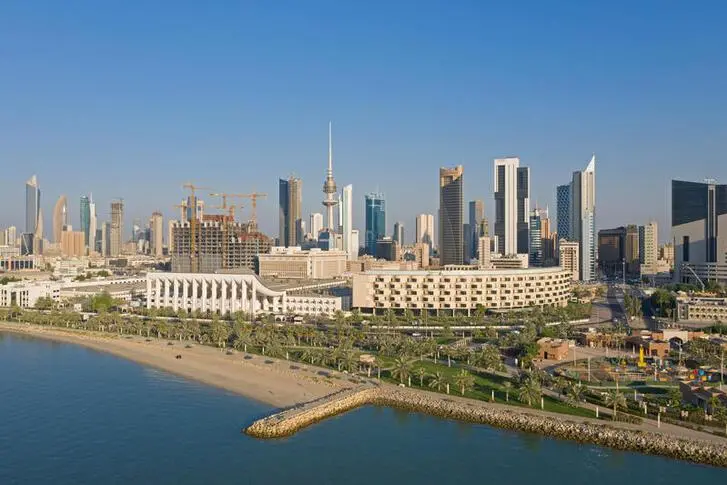08 August 2012
4.5 million Gulf nationals are expected to enter the labour force till 2015, according to NCB Capital research - that's close to the 5 million GCC nationals currently employed in the regional workforce.
Even as regional economies have shown impressive growth over the past year or so, they have not been able to cut unemployment meaningfully.
Absorbing 4.5-million Gulf nationals will be a tall order. According to the International Monetary Fund, Saudi Arabia will need to post a 7.5% growth to halve unemployment over a five-year period.
Clearly, the private sector will have to step and absorb new job seekers.
"The targets involved in this transformation are unprecedented. In Saudi Arabia, the government's ninth five-year plan foresees the creation of 1.2mn new jobs in 2010-14, of which 92% is expected to go to Saudi nationals," notes Dr Jarmo T. Kotilaine, chief economist at NBC Capital research in a report, adding that some projections suggest some three million job opportunities by 2015 and up to a total of six million by 2030.
"This compared to the current total number of Saudis in paid employment of 3.8-million (2009). The overall national labour force stands at 4.3-million," wrote Dr Kotailaine.
Saudi Arabia, of course, launched the Nitaqat programme which rewards companies for hiring a specific number of Saudi nationals and penalises them for missing their national-hiring targets.
"The Nitaqat program has engendered considerable controversy, including widespread suggestions that it will force large numbers of companies to cease operations as they will likely fail to employ sufficient numbers of nationals," notes NCB Capital.
STRUCTURAL UNEMPLOYMENT ISSUES
High unemployment in the Gulf is a long-term phenomenon. For example, as the UAE basked in a massive boom over the last decade, unemployment among Emiratis remain high at 14%. The UAE was not alone. All the Gulf States found it difficult to recruit nationals in the workforce due to a mismatch of skills that had to be filled by expatriates.
An earlier World Bank report highlighted the following key characteristics of the Gulf job market which highlights the challenges ahead:Employment predominantly in services (52.5% in 2008) with industry (21.3%)
Public sector bias in GCC countries
Highest unemployment rates in the world: estimated 10% in 2009; crisis impact
Problem compounded by high underemployment: low-productivity, low income, precarious jobs
Young populations; high youth inactivity rate (65%);
Three million new youth entrants to the labour market annually -pressure to create jobs for these new entrants just to maintain current unemployment levels
Migrant workers in unskilled and semi-skilled jobs & informal economy in the Gulf and Mashreq sub-regions; skilled expatriate workers in the Gulf
Nationalization of workforces in GCC in context of heavy dependence on migrant workers
Six million expatriates in GCC, constituting 80% of the private sector
Nationals remain concentrated in public sector: share of public sector employment in total employment amongst highest in world (81% in KSA)
In the UAE recruitment of nationals in the banking sector is estimated to rise 4% growth each year until Emiratis make up 40-45% of staff, up from the current levels of 33%.
Gulf states created a total of seven million new employment opportunities over the last decade, of which two million went to nationals.
Unemployment among youth in Saudi Arabia stands at nearly 30%
Unemployment figures across the region are also skewed because of low women employment. In the UAE for example, only 27.5% of the women are actively employed. Saudi women made up 16.5% of total Saudi national workforce, according to NCB Capital. In the private sector, that figure stood at 2.1%.
Gulf states will need to find a fine balance between creating employment for nationals but at the same time finding a way to keep skilled expatriate labour who may move out of the region as they become nervous about their future job prospects.
The other key issue for companies as they look to recruit nationals is a rise in salary expenditures. Across the Gulf region, national populations typically earn a higher wage than their expatriate colleagues, and while that is slowly changing in some large companies and at C-suite jobs, the gap persists in mid to small business.
NCB Capital research shows that an average wage of a Saudi in the private sector stood at SAR3,476, compared to SAR1,040 for expatriates.
The Saudi bank suggests opening markets, lowering trade barriers and pursuing an active labour market as some ways to broaden employment opportunities in the region. Labour market inflexibility is also a major hurdle for the private sector.
"Companies that anticipate significant cost of money and time in the event of lay-offs are likely to be more cautious about hiring in the first place, sometimes relying on more flexible solutions such as outsourcing, often outside their home jurisdictions," NCB notes.
4.5 million Gulf nationals are expected to enter the labour force till 2015, according to NCB Capital research - that's close to the 5 million GCC nationals currently employed in the regional workforce.
Even as regional economies have shown impressive growth over the past year or so, they have not been able to cut unemployment meaningfully.
Absorbing 4.5-million Gulf nationals will be a tall order. According to the International Monetary Fund, Saudi Arabia will need to post a 7.5% growth to halve unemployment over a five-year period.
Clearly, the private sector will have to step and absorb new job seekers.
"The targets involved in this transformation are unprecedented. In Saudi Arabia, the government's ninth five-year plan foresees the creation of 1.2mn new jobs in 2010-14, of which 92% is expected to go to Saudi nationals," notes Dr Jarmo T. Kotilaine, chief economist at NBC Capital research in a report, adding that some projections suggest some three million job opportunities by 2015 and up to a total of six million by 2030.
"This compared to the current total number of Saudis in paid employment of 3.8-million (2009). The overall national labour force stands at 4.3-million," wrote Dr Kotailaine.
Saudi Arabia, of course, launched the Nitaqat programme which rewards companies for hiring a specific number of Saudi nationals and penalises them for missing their national-hiring targets.
"The Nitaqat program has engendered considerable controversy, including widespread suggestions that it will force large numbers of companies to cease operations as they will likely fail to employ sufficient numbers of nationals," notes NCB Capital.
STRUCTURAL UNEMPLOYMENT ISSUES
High unemployment in the Gulf is a long-term phenomenon. For example, as the UAE basked in a massive boom over the last decade, unemployment among Emiratis remain high at 14%. The UAE was not alone. All the Gulf States found it difficult to recruit nationals in the workforce due to a mismatch of skills that had to be filled by expatriates.
An earlier World Bank report highlighted the following key characteristics of the Gulf job market which highlights the challenges ahead:
The other key issue for companies as they look to recruit nationals is a rise in salary expenditures. Across the Gulf region, national populations typically earn a higher wage than their expatriate colleagues, and while that is slowly changing in some large companies and at C-suite jobs, the gap persists in mid to small business.
NCB Capital research shows that an average wage of a Saudi in the private sector stood at SAR3,476, compared to SAR1,040 for expatriates.
The Saudi bank suggests opening markets, lowering trade barriers and pursuing an active labour market as some ways to broaden employment opportunities in the region. Labour market inflexibility is also a major hurdle for the private sector.
"Companies that anticipate significant cost of money and time in the event of lay-offs are likely to be more cautious about hiring in the first place, sometimes relying on more flexible solutions such as outsourcing, often outside their home jurisdictions," NCB notes.
© alifarabia.com 2012




















